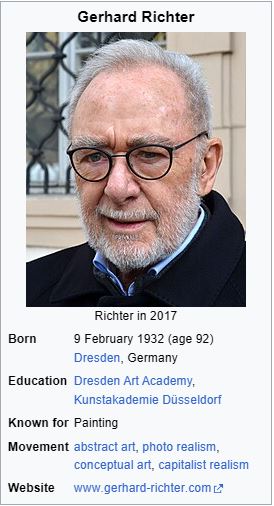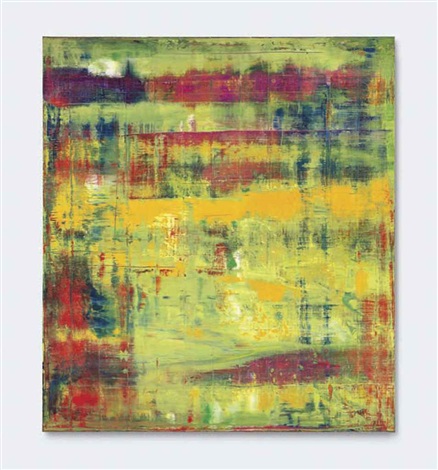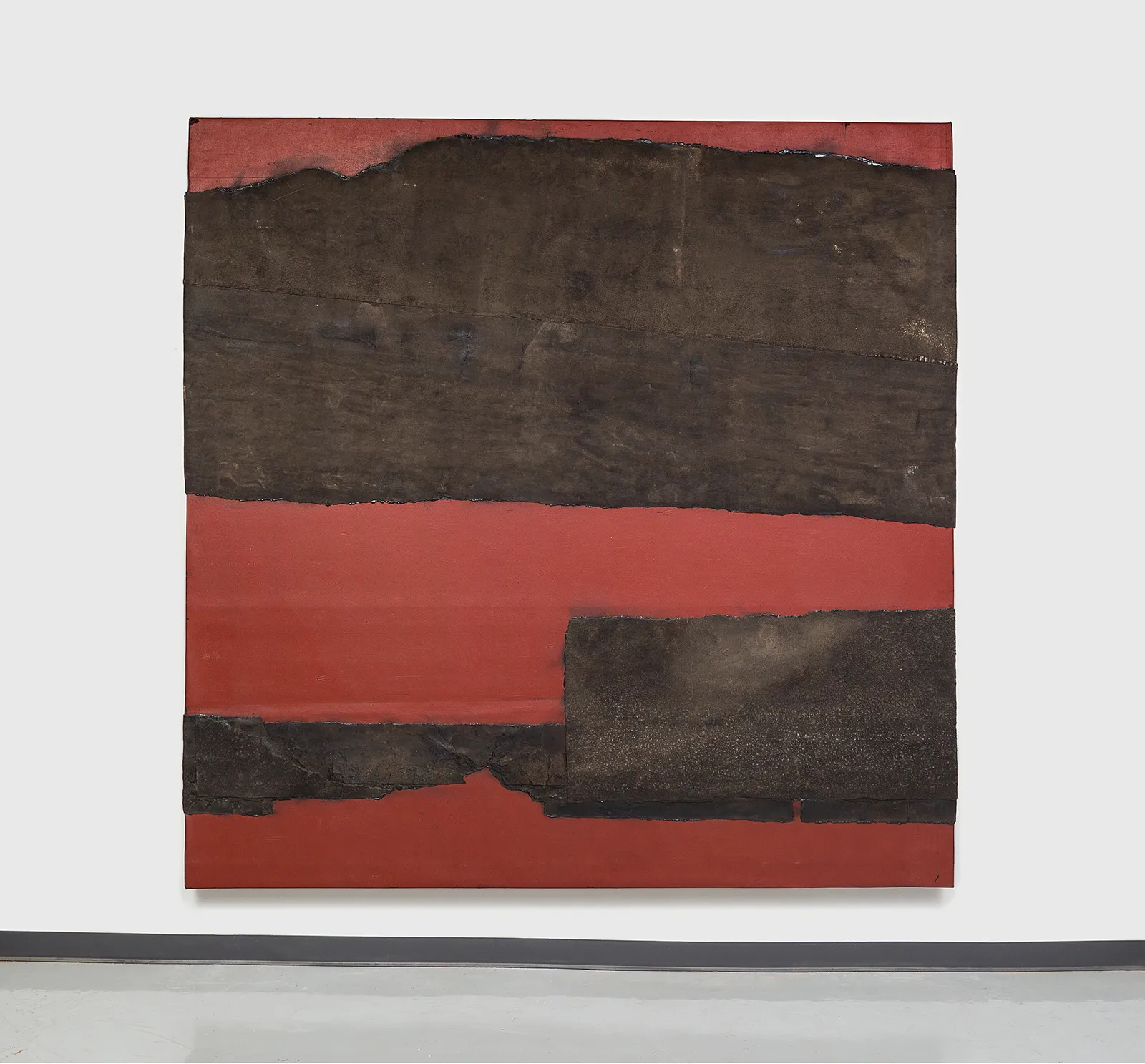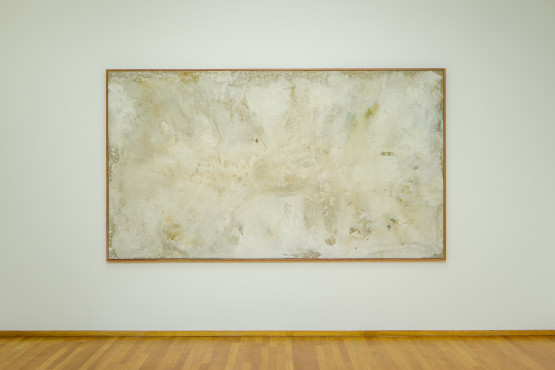My sources of inspiration
Inspired by the Masters: Abstract Expressionism with Organic Materials & Music
The visionary artists of Abstract Expressionism—Mark Rothko, Jackson Pollock, Willem de Kooning, Franz Kline, Cy Twombly, Sean Scully, Theaster Gates, Yayoi Kusama, Navid Nuur, and Gerhard Richter—have profoundly influenced my artistic journey. Their bold approaches to color, gesture, emotion, and abstraction continue to inspire my own creative process.
My Artistic Approach: Organic Abstraction & Music-Driven Creation
Like these masters, I embrace the expressive power of abstraction, but I take it a step further by incorporating organic materials and placing music at the heart of my creative process. My work is characterized by:
- Organic & Sustainable Materials – I use 100% natural pigments, mineral-based paints, and eco-friendly materials, ensuring that each piece is deeply connected to nature.
- Music as the Driving Force – Every painting is created while listening to carefully selected music, allowing rhythm and emotion to guide my brushstrokes in a trance-like state.
- Abstract Expressionism with a Contemporary Twist – Inspired by the freedom of gestural abstraction, my work blends movement, texture, and instinctive mark-making into a unique visual language.
- A Connection Between Art, Nature & Emotion – By integrating earth-derived pigments and the emotional resonance of music, my art seeks to create a multi-sensory experience that goes beyond the canvas.
Honoring the Legacy of Abstract Expressionism
The Abstract Expressionist movement revolutionized modern art by shifting the focus from representation to raw emotion and spontaneous creation. My work pays homage to these pioneering artists, while forging a new path that integrates sustainability, sound, and organic elements.
Experience a new dimension of Abstract Expressionism—where art, nature, and music unite.
Nowadays Artist
Gerhard Richter: A Pioneer of Abstract and Figurative Art


Yayoi Kusama: The Visionary Artist of Infinity, Polka Dots & Avant-Garde Art
Yayoi Kusama, born in 1929 in Matsumoto, Japan, is one of the most influential contemporary artists of our time. Known for her vibrant infinity rooms, iconic polka dot motifs, and whimsical pumpkin sculptures, Kusama has left an indelible mark on conceptual, minimalist, and pop art movements. Based in Tokyo, Japan, she continues to push the boundaries of artistic expression, blending sculpture, installation, painting, film, performance, and even fashion into a distinct visual language.
The Evolution of Yayoi Kusama’s Artistic Journey
Kusama’s work is a fusion of traditional Japanese art and avant-garde experimentation. Initially trained in Nihonga painting, she later embraced the global art scene, moving to New York City in 1958, where she developed many of her signature styles, including:
- ‘Net’ paintings – Organic, web-like abstractions that explore infinity and repetition.
- Polka dot motifs – A recurring symbol of boundlessness and self-obliteration.
- Performance art & installations – Transforming spaces into immersive, surreal experiences.
- Pumpkin sculptures – Playful yet profound representations of obsession and nostalgia.
Infinity Rooms & Kusama’s Impact on Contemporary Art
Upon returning to Japan in the 1970s, Kusama expanded her artistic vision, introducing the world to her awe-inspiring Infinity Mirror Rooms—environments that challenge perceptions of space, time, and reality. These installations, along with her large-scale public sculptures, have made her one of the most sought-after artists in museums, galleries, and exhibitions worldwide.
A Global Art Icon
Kusama’s work continues to captivate audiences across generations, blending abstract expressionism, pop art, feminist art, and conceptualism into a deeply personal and psychological narrative. With a career spanning over seven decades, she remains at the forefront of contemporary art, constantly reinventing her artistic legacy.
Discover the mesmerizing world of Yayoi Kusama and experience the infinite creativity of one of the greatest contemporary artists of our time.
Link wikipedia: click here
Link website: click here
Franz Kline
Franz Kline, known for his monochromatic palette and his large, bold abstract compositions, showed me the power of simplicity and the impact of scale. His works, often a study in contrasts, demonstrated how limitations in color and form do not have to restrict the expressive possibilities of an artwork.



Sean Scully: A Visionary in Contemporary Abstract Art
Sean Scully, born in 1945 in Dublin, Ireland, is one of the most influential artists in contemporary abstract painting. Known for his bold geometric compositions, textured surfaces, and emotionally charged color palettes, Scully has redefined modern abstraction, merging structure with raw human expression. Currently based between New York, USA, and Munich, Germany, his work continues to inspire and challenge the boundaries of artistic form.
The Signature Style of Sean Scully
Scully’s art is instantly recognizable, characterized by:
- Bold stripes and geometric blocks – Creating rhythmic, almost architectural compositions.
- Earthy and vibrant hues – A unique interplay of natural and dynamic color schemes.
- Textured, expressive surfaces – Adding depth and emotion to his abstract forms.
- A fusion of structure and spontaneity – Balancing precision with an organic, painterly approach.
His works, often inspired by landscapes, architecture, and personal memories, evoke a deep emotional resonance, making abstraction more accessible and engaging.
A Global Influence in Contemporary Art
Sean Scully’s impact on the art world is profound, with exhibitions in renowned institutions such as:
- The Metropolitan Museum of Art (New York, USA)
- The National Gallery (London, UK)
- Tate Modern (London, UK)
His paintings are celebrated for their ability to bridge modernist traditions with contemporary expression, influencing generations of artists and art enthusiasts worldwide.
Redefining the Boundaries of Abstract Painting
Scully’s work is more than just visual abstraction—it’s a meditation on color, space, and emotion. By blending minimalism with raw human experience, he brings warmth and depth to a genre often perceived as detached. His legacy continues to evolve, ensuring his place as a pioneer in modern abstract expressionism.
Discover Sean Scully’s innovative approach to color and form, and explore how his visionary works redefine contemporary abstract painting.
Link wikipedia: click here
Link website: click here



Theaster Gates: Redefining Contemporary Art Through Social Engagement & Urban Transformation
Theaster Gates, born in 1973 in Chicago, USA, is a groundbreaking artist known for merging urban revitalization, social activism, and contemporary art. Working across painting, sculpture, pottery, and performance, Gates challenges traditional artistic boundaries, transforming spaces and materials into powerful reflections of history, culture, and community.
Theaster Gates’ Artistic Vision
Gates’ work is deeply rooted in materiality, minimalism, and cultural storytelling. His abstract compositions often incorporate industrial materials like metal and construction supplies, creating artworks that bridge the gap between art, architecture, and social impact. His projects highlight historical narratives, preserving and reimagining neglected spaces to foster community engagement.
Urban Transformation & Cultural Preservation
One of Gates’ most renowned projects, the Stony Island Arts Bank in Chicago, exemplifies his commitment to repurposing abandoned spaces into cultural institutions. His work extends beyond traditional galleries, breathing new life into urban landscapes while addressing themes of race, history, and collective memory.
A Global Presence in Contemporary Art
Gates’ influence spans across prestigious international institutions, with exhibitions at:
Tate Modern (London, UK)
Documenta (Kassel, Germany)
The Museum of Contemporary Art (Chicago, USA)
Through these platforms, he continues to shape the conversation on the intersection of art, activism, and urban renewal.
Pioneering a New Era of Abstract Art
With a unique blend of conceptual depth and material innovation, Theaster Gates is redefining abstract painting and sculpture, proving that art can be both visually compelling and socially transformative. His work challenges audiences to rethink public space, cultural heritage, and the role of art in shaping communities.
Discover the visionary art of Theaster Gates and explore how his creative activism is reshaping contemporary art and urban culture.
Link wikipedia: click here
Link website: click here


Navid Nuur: A Visionary in Contemporary Conceptual Art
Navid Nuur, born in 1976 in Tehran, Iran, and now based in The Hague, Netherlands, is an internationally acclaimed artist known for his conceptual, process-driven approach to art. Originally trained as a graphic designer and illustrator, Nuur transitioned into autonomous art over a decade ago, quickly gaining recognition for his innovative and boundary-pushing work.
The Artistic Philosophy of Navid Nuur
Nuur’s practice is deeply experimental and interdisciplinary, blending elements of sculpture, painting, installation, and text-based art. His work often explores themes of perception, material transformation, and the relationship between object and viewer. By incorporating unconventional materials and ephemeral processes, Nuur challenges the traditional notions of contemporary art, creating works that are both visually striking and conceptually profound.
International Recognition & Prestigious Exhibitions
Nuur’s work has been featured in leading museums and institutions, including:
- Marta Herford Museum (Herford, Germany)
- Centre Pompidou (Paris, France)
- Parasol Unit (London, UK)
- Bonnefanten Museum (Maastricht, Netherlands)
Award-Winning Artist in Modern Painting & Conceptual Art
Navid Nuur’s contributions to contemporary art have earned him several prestigious accolades, including:
- Volkskrant Art Prize (2010)
- Charlotte Köhler Prize (2010)
- Royal Award for Modern Painting (2011)
- Discoveries Prize at Art Basel Hong Kong (2013)
Pushing the Boundaries of Contemporary Art
With a unique ability to blend material exploration and conceptual depth, Nuur continuously reinvents the boundaries of modern art, installation, and process-based practices. His art challenges viewers to rethink their engagement with materials, space, and perception, making him a leading figure in the global art scene.
Discover the boundary-defying work of Navid Nuur and experience the evolving nature of contemporary conceptual art.
Mark Rothko
Mark Rothko, whose work is characterized by large fields of color that seem to float on the canvas, taught me about the emotional depth that can be achieved with subtle transitions and the interplay between colors. Rothko’s paintings, often seen as gateways to a deeper, meditative experience, inspired me to experiment with color and to discover how abstract compositions can evoke a profound emotional resonance.


Artists who have inspired me
Abstract art has always occupied a special place in the realm of visual arts, a domain where the subjective expression and inner experiences of the artist stand at the forefront. My journey through abstract art began when I found inspiration in some of the most influential figures in this field: Cy Twombly, Jackson Pollock, Willem de Kooning, Franz Kline, and Mark Rothko. Each of these artists has uniquely contributed to the development of abstract art, and their works have deeply impressed me, fundamentally changing the way I approach art.
Back in the days
Jackson Pollock: The Master of Drip Painting & Abstract Expressionism
Jackson Pollock (1912–1956) revolutionized modern art with his groundbreaking drip painting technique, redefining the boundaries of abstract expressionism. His dynamic, fluid compositions captured the raw energy of movement, inviting viewers to experience painting as an act of motion and rhythm, rather than just a finished image.
The Legacy of Jackson Pollock’s Drip Paintings
Pollock’s drip technique, where paint is poured or flicked onto the canvas, broke away from traditional brushwork, turning action into art. His signature style influenced generations of artists, transforming abstraction into an immersive experience.
- “Mural” (1943) – Commissioned by Peggy Guggenheim, this monumental work marked Pollock’s early experimentation with large-scale abstraction.
- “The She-Wolf” (1943) – A defining piece of abstract expressionism, now housed at MoMA, New York.
- “Number 5” (1948) – One of the most expensive paintings ever sold, fetching $140 million at auction in 2006.
A Global Art Icon
Pollock’s influence extended far beyond the studio—his work was celebrated on the cover of Life Magazine, bringing abstract art into the mainstream. He also represented the U.S. at the Venice Biennale (1948), solidifying his status as a leading figure in modern art history.
Why Jackson Pollock Still Matters Today
Pollock’s art isn’t just about the final product; it’s about the process. His revolutionary action painting technique continues to inspire contemporary artists, proving that art is as much about movement, emotion, and spontaneity as it is about form and composition.
Discover the legacy of Jackson Pollock and experience the energy of his iconic drip paintings.
🔗 Explore more: jackson-pollock.org


Franz Kline: Master of Bold Abstract Expressionism
Franz Kline (1910–1962) was a key figure in the Abstract Expressionist movement, renowned for his monochromatic palette, dynamic brushstrokes, and large-scale compositions. His bold black-and-white paintings challenged conventional notions of abstraction, proving that simplicity in color and form can create immense expressive power.
The Signature Style of Franz Kline
Kline’s gestural, calligraphic brushstrokes and monumental canvases emphasized movement, contrast, and energy. His work is characterized by:
- Monochromatic color schemes – Primarily black and white, creating stark visual impact.
- Bold, sweeping strokes – Expressing motion, structure, and raw emotion.
- Large-scale compositions – Enhancing the immersive experience of his art.
- Contrast & balance – Exploring the interplay between space, form, and depth.
Franz Kline’s Influence on Modern Art
While many of his contemporaries experimented with color and surrealist influences, Kline’s focus on pure abstraction and gestural energy made his work instantly recognizable. His ability to create dynamic intensity with minimal elements has left a lasting mark on modern abstraction and minimalist painting.
Kline’s Legacy in Abstract Expressionism
His works are housed in major institutions, including:
- The Museum of Modern Art (MoMA, New York)
- The Whitney Museum of American Art
- The Metropolitan Museum of Art
Kline’s art continues to inspire contemporary artists, demonstrating that abstraction can be both powerful and minimalist. His ability to transform simplicity into expressive depth cements his legacy as a pioneer of abstract expressionism.
Discover the impact of Franz Kline’s bold compositions and his enduring influence on abstract art.
Link wikipedia: click here
Link website: click here


Willem de Kooning: A Master of Abstract Expressionism & Emotional Brushwork
Willem de Kooning (1904–1997) was a pioneering figure in Abstract Expressionism, known for his powerful brushstrokes, emotive compositions, and dynamic use of color. His paintings seamlessly combined figuration and abstraction, creating works that embodied both harmony and tension. De Kooning’s expressive approach to form and movement redefined modern painting, inspiring generations of artists to embrace raw emotion in their work.
The Signature Style of Willem de Kooning
De Kooning’s art is celebrated for its bold, gestural energy and emotionally charged expression. His paintings often feature:
- Vivid, layered color palettes – A mix of soft, luminous hues and striking contrasts.
- Expressive brushwork – Dynamic, sweeping strokes that capture movement and emotion.
- Figurative-abstraction fusion – Blurring the boundaries between the human form and abstract composition.
- Tension & fluidity – A balance of structure and spontaneity that defines his unique aesthetic.
De Kooning’s Influence on Contemporary Art
As one of the leading figures of New York’s postwar art scene, de Kooning played a pivotal role in shaping the Abstract Expressionist movement alongside Jackson Pollock and Franz Kline. His iconic “Woman” series challenged artistic conventions, introducing expressive figurative distortion and psychological depth to abstract painting.
His work has been exhibited in major institutions, including:
- The Museum of Modern Art (MoMA, New York, USA)
- The Whitney Museum of American Art
- The Guggenheim Museum
A Lasting Legacy in Modern Art
De Kooning’s ability to channel raw emotion into form and color continues to influence contemporary artists. His work proves that art is not just about representation, but about the emotional and physical act of painting itself.
Explore Willem de Kooning’s transformative impact on modern art and the evolution of Abstract Expressionism.
Link wikipedia: click here
Link website: click here


Cy Twombly: Redefining Abstract Expressionism with Gesture & Spontaneity
Cy Twombly (1928–2011) was a visionary in contemporary art, known for his distinctive scribbles, gestural lines, and raw mark-making that blurred the boundaries between drawing, writing, and painting. His work, often resembling childlike doodles and expressive script, challenged the traditional expectations of abstraction, proving that emotion and spontaneity can be more powerful than technical precision.
The Signature Style of Cy Twombly
Twombly’s art is a fusion of gesture, movement, and symbolism, often inspired by classical mythology, poetry, and personal emotion. His signature elements include:
- Spontaneous scribbles & loops – Dynamic, free-flowing lines that embrace imperfection.
- Layered, expressive mark-making – A mix of painting, drawing, and written text.
- Historical & literary references – Many works incorporate poetic and mythological influences.
- Raw, gestural abstraction – A focus on movement, rhythm, and expressive energy.
Breaking the Rules of Traditional Painting
Twombly’s work demonstrated that art doesn’t have to be about perfection—instead, it can be about pure expression and instinctive creation. His ability to transform scribbles into profound artistic statements influenced a new generation of artists, proving that even the simplest marks can carry deep meaning.
Cy Twombly’s Impact on Modern Art
As a key figure in Abstract Expressionism and Neo-Expressionism, Twombly’s work has been exhibited in major institutions worldwide, including:
- The Museum of Modern Art (MoMA, New York, USA)
- The Tate Modern (London, UK)
- The Centre Pompidou (Paris, France)
- The Cy Twombly Foundation & Museum (Houston, USA & Gaeta, Italy)
A Lasting Legacy in Abstract Art
Twombly’s ability to balance chaos and control, emotion and form has left a lasting impact on contemporary abstraction. His approach encourages artists to embrace freedom, spontaneity, and the imperfections that make art deeply personal and human.
Discover Cy Twombly’s revolutionary impact on abstract expressionism and the power of pure artistic expression.
Link wikipedia: click here
Link website: click here


Mark Rothko: Master of Color Field Painting & Emotional Abstraction
Mark Rothko (1903–1970) was a pivotal figure in Abstract Expressionism, renowned for his color field paintings that transcend traditional art forms, inviting viewers into a deep, meditative experience. His signature style—large, floating rectangles of color—demonstrates how subtle transitions and color interplay can evoke powerful emotional responses.
The Artistic Vision of Mark Rothko
Rothko’s work is characterized by its simplicity and profound depth, featuring:
- Vast fields of luminous color – Often in shades of red, orange, yellow, and black, creating a sense of ethereal light and shadow.
- Soft, blurred edges – Enhancing the impression of colors merging and floating on the canvas.
- Layered compositions – Utilizing thin layers of paint to achieve a glowing, almost translucent effect.
- Emotional resonance – Designed to evoke introspection, contemplation, and spiritual connection.
Rothko’s Influence on Modern Art
Unlike many of his Abstract Expressionist contemporaries who focused on gestural abstraction, Rothko’s work offers a meditative alternative, emphasizing emotional intensity through simplicity. His paintings are celebrated as gateways to inner reflection, challenging the viewer to engage with the emotional power of color.
Exhibitions & Legacy
Rothko’s works are displayed in prestigious institutions worldwide, including:
- The Museum of Modern Art (MoMA, New York, USA)
- The Tate Modern (London, UK)
- The National Gallery of Art (Washington, D.C., USA)
- The Rothko Chapel (Houston, USA)
A Lasting Legacy in Color Field Painting
Rothko’s approach to abstract compositions reshaped modern art, demonstrating that color alone can be a profound medium for emotional expression. His legacy continues to inspire artists to explore the transformative power of color and abstraction.
Explore the timeless impact of Mark Rothko’s color field paintings and discover how his art transforms emotion into visual poetry.
Link wikipedia: click here
Link website: click here




